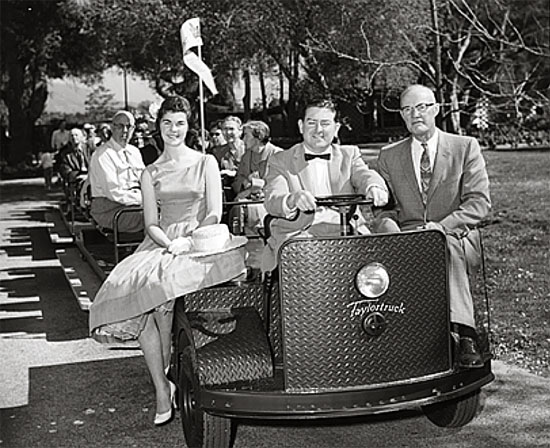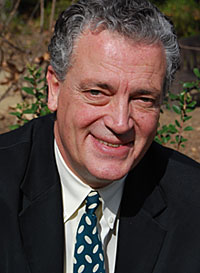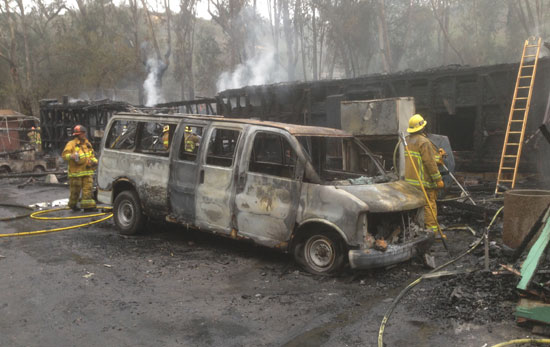Moving forward at Descanso
June 11, 2014

Trams have been a fixture at the gardens since the 1960s. But they've now come to the end of the road.
When an early morning fire engulfed a storage structure at Descanso Gardens in January, a bit of history went up in smoke. And maybe that wasn’t so bad, admits the garden’s executive director, David R. Brown.
Descanso’s vast botanic collection completely escaped the blaze that took firefighters about 2 hours to extinguish. But the flames devoured virtually all of the Los Angeles County facility’s tools and vehicles—including trams that had ferried visitors around the 160-acre grounds since the early 1960s.
While the trams were part of Descano’s longtime culture, they also were “very large and noisy and intrusive,” unable to deliver people to some of the garden’s most popular but secluded spots, according to Brown. That included the historic Boddy House, with a hilltop setting too challenging for many of Descanso’s elderly, disabled or simply out-of-shape visitors to reach.
In all, Brown said, only 8% of Decanso’s 250,000 annual visitors were boarding the trams, which would sit idle on busy weekends because they were too unwieldy for the garden’s crowded walkways.
In visitor surveys, Brown said, “mobility came up over and over and over again, that it’s not comfortable to walk here.” The fire, he said, “allowed us to rethink the notion of a superior visitor experience.”
Among other upcoming changes, Brown said, the trams will be replaced by electric-powered shuttles—essentially big golf carts—that will transport as many as six passengers into regions previously accessible only by foot. The shuttles will be free and compliant with the Americans with Disabilities Act—unlike the $4-a-ride trams.
The timing, Brown said, couldn’t be better. In the months ahead, Descanso will open a 5-acre exhibit in a previously-closed section of the gardens. Promotional materials say the undertaking will replicate and honor the region’s native landscape of oak woodlands, meadows and chaparral—an ecosystem that has been increasingly threatened by aggressive development. The new shuttles, he said, are key in helping the Oak Woodland Project find its audience.
“We wanted to give people access to the further reaches of the gardens,” Brown said, “so they can have a physical experience with a landscape that typified Southern California before it was explored and developed.”
Descanso gardens has long been considered one of Southern California’s premiere public gardens, perhaps best known for its thousands of towering camellias and expansive rose garden. Located in affluent La Canada Flintridge, in the shadow of the San Gabriel Mountains, Descano was founded by E. Manchester Boddy, the former publisher of the Los Angeles Daily News. He sold the property—including his 22-room mansion—to Los Angeles County in 1953.
Brown, the former president of Art Center College of Design, was named executive director of Descanso in 2005 by the Board of Supervisors.
Beyond the trams, he said other vehicles and equipment destroyed in the fire also will be replaced with more efficient, environmentally-friendly versions through insurance, county funding and foundation grants.
Still, everything post-fire isn’t coming up roses—or camellias, as the case may be. Damage from the fire, which apparently was sparked by an electrical problem, has been estimated to be as high as $750,000. And some of the items reduced to ash were priceless—including two old refrigerated boxcars owned by Boddy.
“Mythology holds that Mr. Boddy once used them to ship his camellias to customers in the Midwest and on the East Coast,” Brown said.
But overall, now that the smoke has cleared, the opportunities are clear.
“In a way, the fire was sort of a cleansing experience,” Brown said. “It kind of pulled us together.”
Posted 6/11/14














 405 bridge work causes a stink
405 bridge work causes a stink
